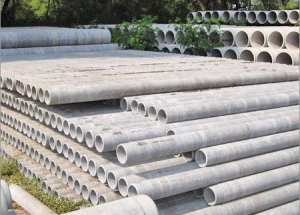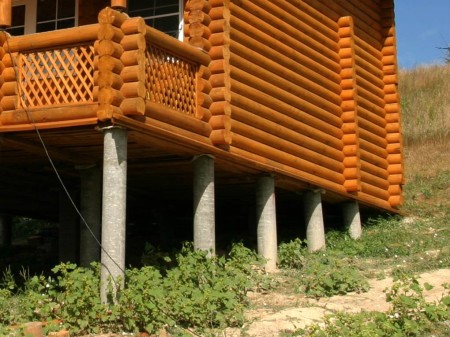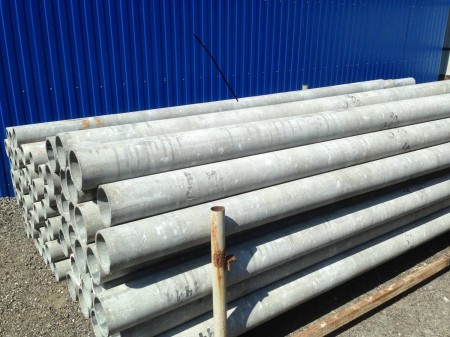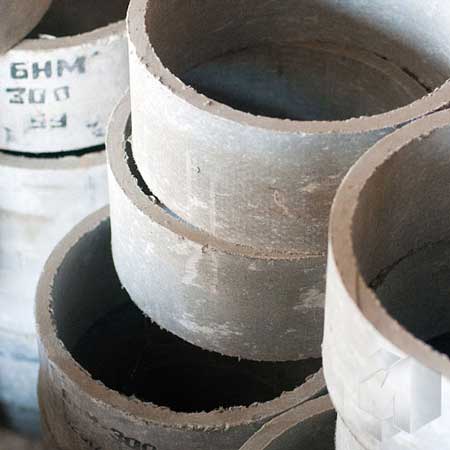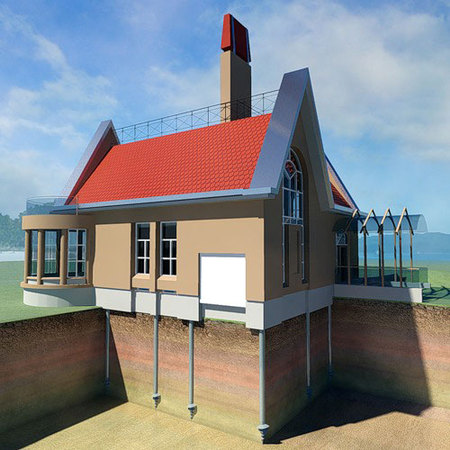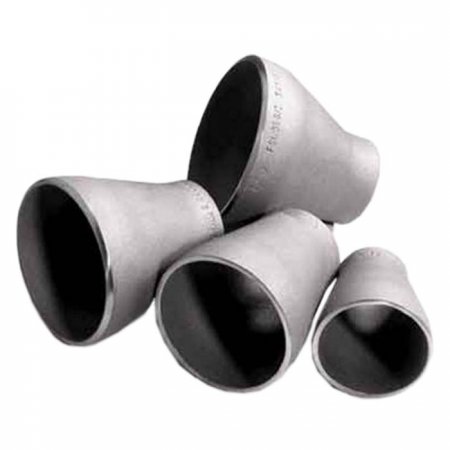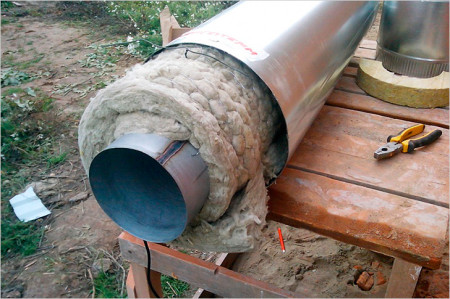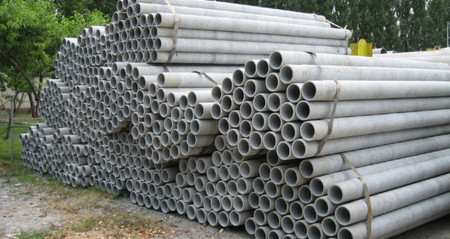To guess about the composition of the material from which the asbestos-cement pipes are made is not at all difficult. If we consider it in more detail, then 85% is cement, 15% - asbestos, in the process of production, ordinary water is also used. If before, asbestos-cement pipes were extremely popular, today there are active disputes among specialists about the expediency of their use - the needle structure and chemical composition of this silicate natural material in some countries have been recognized as harmful to humans and classified as dangerous carcinogens. Nevertheless, in Russia, products produced with the inclusion of asbestos are still used in the performance of construction work. The fact is that asbestos used in Russian production is mined in the Urals, is characterized by chemical inertness and the ability to absorb other chemical components.
Content
Area of use of asbestos-cement pipes
Although the controversy surrounding the asbestos still continues, but pipes in which this material is available are used in different branches of the economy:
- for arrangement of foundations,
- drainage systems,
- creation of chimneys,
- installation of ventilation ducts,
- construction of irrigation systems.
Asbestos cement pipes - dimensions and classification
Manufacture of pipe products takes place at specialized enterprises, the range of products includes not only pipes, but also connecting elements to them, asbestos cement couplings. The diameter of the pipes produced can be 100 mm, 200 mm - 500 mm. The standard length of the pipes is 3.95 m - 5 m.
The pipes differ not only in size - they can be:
- pressure,
- non-pressure.
The asbestos cement pressure pipe can be straight, cylindrical or bell-shaped. The thickness of the walls of the product can be from 7 to 18 mm, the internal diameter of 50 to 600 mm. Operation of pressure pipes is allowed in systems with operating pressure in the range of 0, 3 - 1.2 MPa.
The process of manufacturing pipes is divided into several stages, in order to strengthen the strength properties of the product, it must be kept in steam chambers, and the strength of the core of the pipe during this processing can increase by approximately 70-75%.
Pressure pipes have little hydraulic resistance and are characterized by a long service life.
Use these products can be used in the construction of:
- dykes and pipe lines,
- sewage and sewerage systems,
- meliorative and irrigation systems.
They are also used in the construction of wells, for the production of feeders for cattle.
Installation of asbestos-cement pipes is performed without welding or threading. The connection is provided by rubber heat-resistant seals. Tightness is achieved by sealing the clutch caused by the head of water in the pipeline. Weak points, which are usually welded seams, are absent in such a pipeline.
Asbestos cement free-flow pipes are often used:
- when laying cable communication lines in need of additional protection,
- when installing systems of pressureless sewerage,
- when building reservoirs,
- as chimneys,
- as a material for the foundation, pipes with a diameter of 100 to 200 mm are used for this purpose.
Details of the use of asbestos cement pipes
foundation construction
If the construction is planned on too wet or submerged plots, a columnar foundation is usually designed. Of course, it is possible to perform the work using metal pipes, but experts often prefer the asbestos cement products - they are less susceptible to corrosion and have a lower coefficient of thermal expansion. The optimum diameter of asbestos cement pipes for the foundation is 200 mm.
construction of non-pressure water supply
When constructing a non-pressure water pipe, pipes that meet the requirements of GOST 1839-80 are used. Pipes of this quality with a diameter of 10 or 200 mm are capable of withstanding a pressure of the order of 12 atm, they weigh much less than metallic ones, they are connected by means of couplings, and cement mortar is used to seal the joints during the laying of the pipeline. Pipes are stacked alternately, with a small slope on the entire length of the pipeline.
Before you put on the clutch it should be thoroughly cleaned of sand and dust.
asbestos-cement pipes for chimney
In principle, any chimney can be used to build a chimney, but products with a diameter of 200 mm are the most common. It should be noted that the maximum temperature that can withstand asbestos-cement is 200 - 300 C, if the temperature of the outgoing gas from the furnace exceeds the recommended values - the pipe may burst. Experts recommend that only the upper part of the chimney be made from pipes, the lower one should be built from brick.
Unfortunately, flaws in the chimney from the asbestos-cement pipes are available, and they are more powerful than the advantages:
- when heated to a temperature above 300 ° C, the pipe may burst or explode,
- the pipe material is able to absorb condensate,
- removal of soot is difficult or even impossible,
- arrangement of inspection hatches is impossible.
Marking of asbestos-cement pipes, GOSTs
Each industrial pipe is marked with a marking, the general abbreviation for all asbestos cement products is BNT, the numbers following the letter designation are the diameter of the asbestos-cement pipe in mm.
For example, if the pipe has marking BNT-100 GOST 1839-80, this means:
- that the pipe is asbestine, non-pressure,
- its inside diameter is 100 mm,
- GOST 1839-80 - that it meets the requirements presented in this document.
When purchasing asbestos-cement products, it is recommended that you have a certificate of compliance for this product.
If in Soviet times asbestos-cement pipes were used in most cases at
creation of reclamation systems, then in the 90s a regulatory framework was created that allows their application in civil and industrial construction. In particular, when installing heat transfer systems. At the same time, the requirements to the temperature of the carrier and the pressure under which it is fed are taken into account.
Accordingly, to the point of SNIP 10.3 non-metallic pipes can be used to supply water technical or drinking.
The advantages and disadvantages inherent in asbestos-cement products
To finally form an opinion correctly, one should start with negative points. Among the major drawbacks, mention should be made of fragility, i.e. in the process of transportation and installation to the pipes should be treated carefully, and when buying it is recommended to thoroughly examine the ends of pipes for the presence of visible delaminations of the material on them. Rastresnuvshiesya products used in the construction of a water pipe or sewage system can not.
The second disadvantage is the propensity to corrosion of the outer layer of products, but this negative phenomenon can be avoided by qualitative isolation of all the components of the pipeline.
Now you can proceed to discuss the positive points:
since the material is a dielectric, the tubes themselves can not suffer because of the electrochemical effect exerted by the wandering currents. Pipelines from asbestos-cement do not need cathodic protection. For this reason, they are indispensable when performing assembly work in industrial areas and in the railway construction system.
The process of machining such products is very simple, which has a significant effect on the speed of assembly work.


